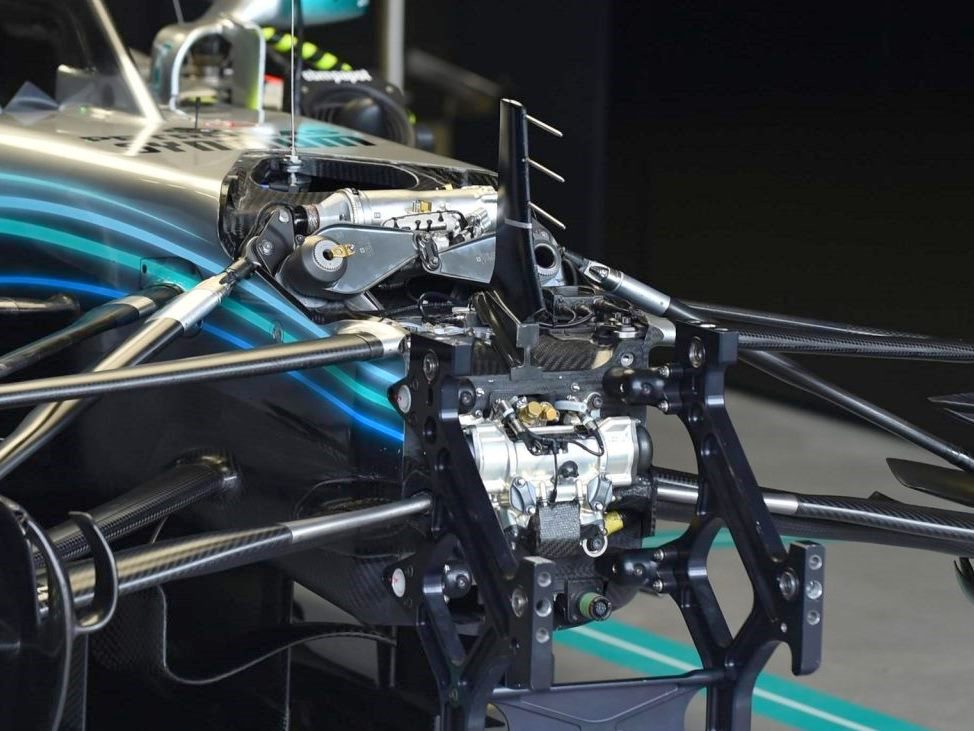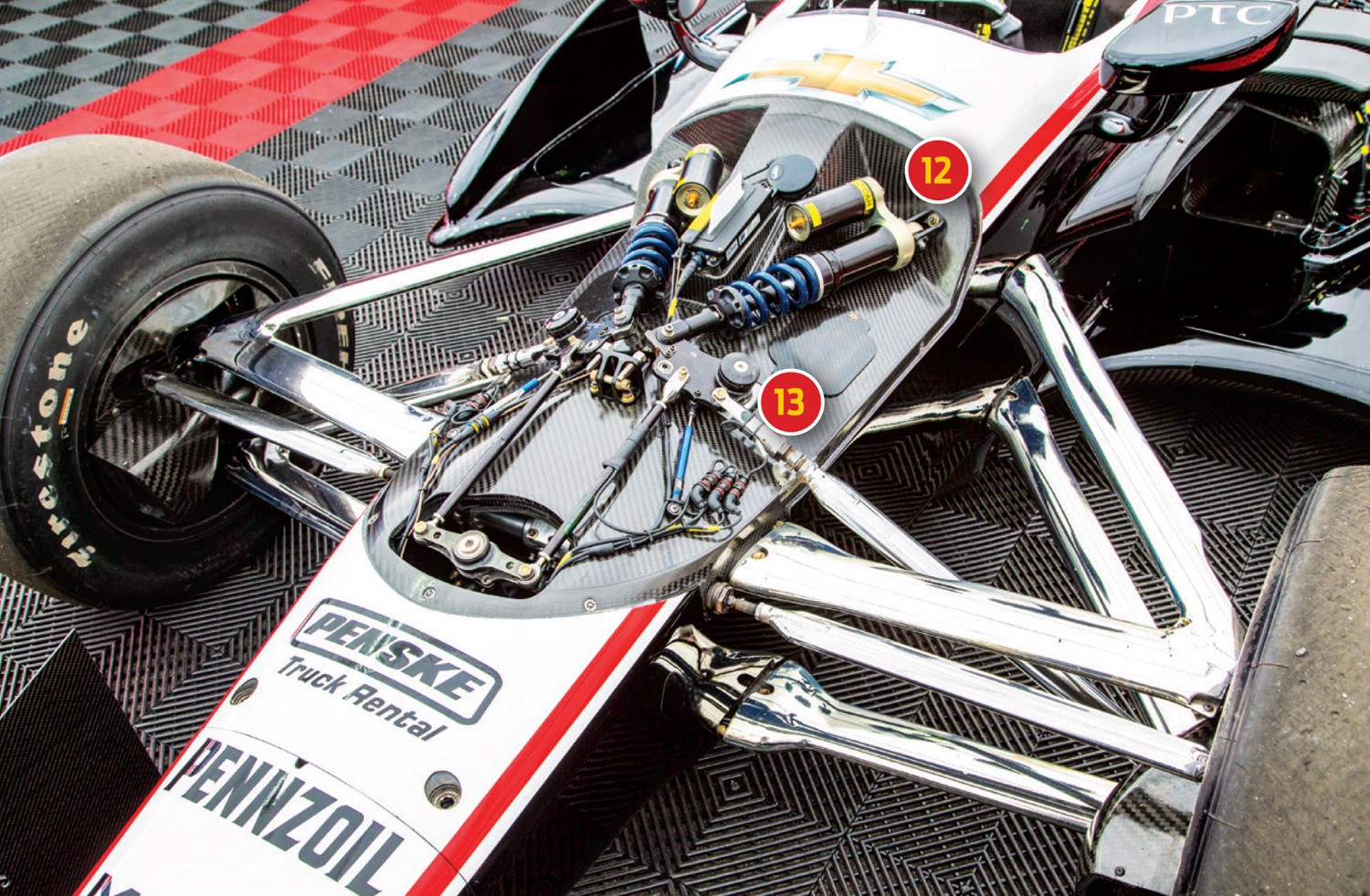Mercedes F1 front suspension analysis
 |
| Mercedes front suspension operates in a vertical plane inside the carbon fiber tub |
The Mercedes F1 car features a fully hydraulic front end, with the heave or third suspension element the key to understanding how it works.
The heave element is now placed inline with the rocker assembly and helps to control the vertical displacement of the suspension. The dampers sit vertical inside the chassis out of sight. It all sits in front of the drivers feet, which is possible because an F1 car has a much longer wheelbase than an IndyCar.
Although dated, this article explains how a typical F1 front suspension operates in that vertical plane inside the chassis – out of sight of spy cameras.
All of the teams use a third/heave element but only a few have hydraulic units on the complexity level of Mercedes arrangement, likely due to budgetary constraints.
The rest of the field continues to use a spring assisted third/heave damper.
 |
| IndyCar front suspension layout. Whereas the Mercedes suspension works in a vertical plane, IndyCar still a horizontal layout |
Note how the front suspension of an IndyCar looks (left). The IndyCar still uses conventional pushrod layout, with twin coil-over dampers resting atop the chassis and the drivers lower legs.
The IndyCar features a ride control device and anti-roll bar mounted at the front of the chassis, and the front dampers attaching between the pushrod’s rocker arms and the dash bulkhead.
The layout is inverted at the rear, with the dampers mounting between the rocker arms and the front of the bellhousing just behind the engine. The rear ride control device and anti-roll bar sit atop the gearbox at the back of the car.
